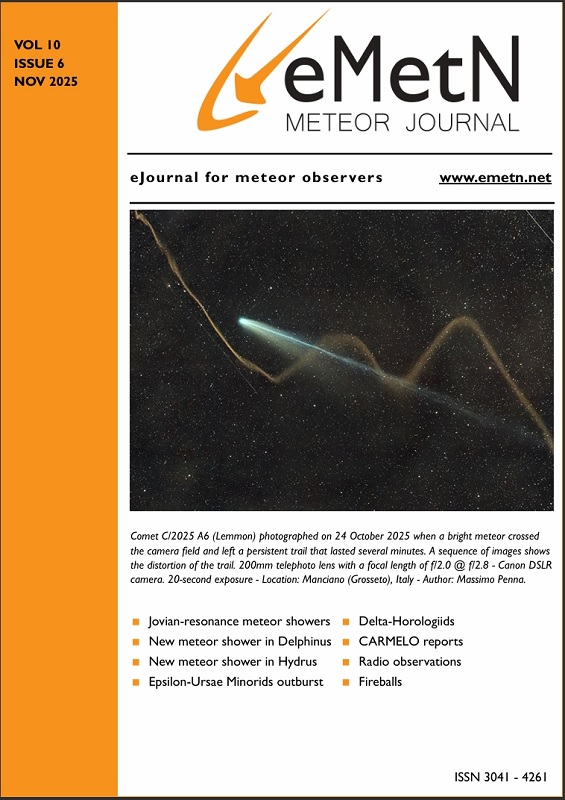Abstract: An overview of the radio observations during April 2023 is given.
The graphs show both the daily totals (Figure 1) and the hourly numbers (Figure 2) of “all” reflections counted automatically, and of manually counted “overdense” reflections, overdense reflections longer than 10 seconds and longer than 1 minute, as observed here at Kampenhout (BE) on the frequency of our VVS-beacon (49.99 MHz) during the month of April 2023.
The hourly numbers, for echoes shorter than 1 minute, are weighted averages derived from:

Weak to moderate lightning activity was recorded on only 2 days, while local interference and unidentified noise remained low this month. On several days solar noise was however quite strong. A few examples displayed in Figures 3 to 6.
Meteor activity was slowly increasing, with a nice outburst of the Lyrids reaching a maximum here on April 23th. As the graphs show, the shower is hardly seen when “all” reflections are considered, but shows up prominently in the graphs of “overdense” reflections. A closer look at the data also reveals a number of fainter showers.
Over the entire month, only 2 reflections longer than 1 minute were observed. Along with some interesting “epsilons” they are included (Figures 7 to 13). A lot more “epsilons” are available on request.
In addition to the usual graphs, you will also find the raw counts in cvs-format from which the graphs are derived. The table contains the following columns: day of the month, hour of the day, day + decimals, solar longitude (epoch J2000), counts of “all” reflections, overdense reflections, reflections longer than 10 seconds and reflections longer than 1 minute, the numbers being the observed reflections of the past hour.

Figure 1 – The daily totals of “all” reflections counted automatically, and of manually counted “overdense” reflections, as observed here at Kampenhout (BE) on the frequency of our VVS-beacon (49.99 MHz) during April 2023.

Figure 2 – The hourly numbers of “all” reflections counted automatically, and of manually counted “overdense” reflections, overdense reflections longer than 10 seconds and longer than 1 minute, as observed here at Kampenhout (BE) on the frequency of our VVS-beacon (49.99 MHz) during April 2023.

Figure 3 – Solar noise outburst on 17 April 2023.

Figure 4 – Solar noise outburst on 20 April 2023.

Figure 5 – Solar noise outburst on 21 April 2023.

Figure 6 – Solar noise outburst on 17 April 2023.

Figure 7 – Meteor echo 3 April 2023, 05h10m UT.

Figure 8 – Meteor echo 4 April 2023, 04h00m UT.

Figure 9 – Meteor echo 11 April 2023, 02h20m UT.

Figure 10 – Meteor echo 21 April 2023, 08h05m UT.

Figure 11 – Meteor echo 23 April 2023, 01h10m UT.

Figure 12 – Meteor echo 24 April 2023, 01h55m UT.

Figure 13 – Meteor echo 27 April 2023, 10h15m UT.




